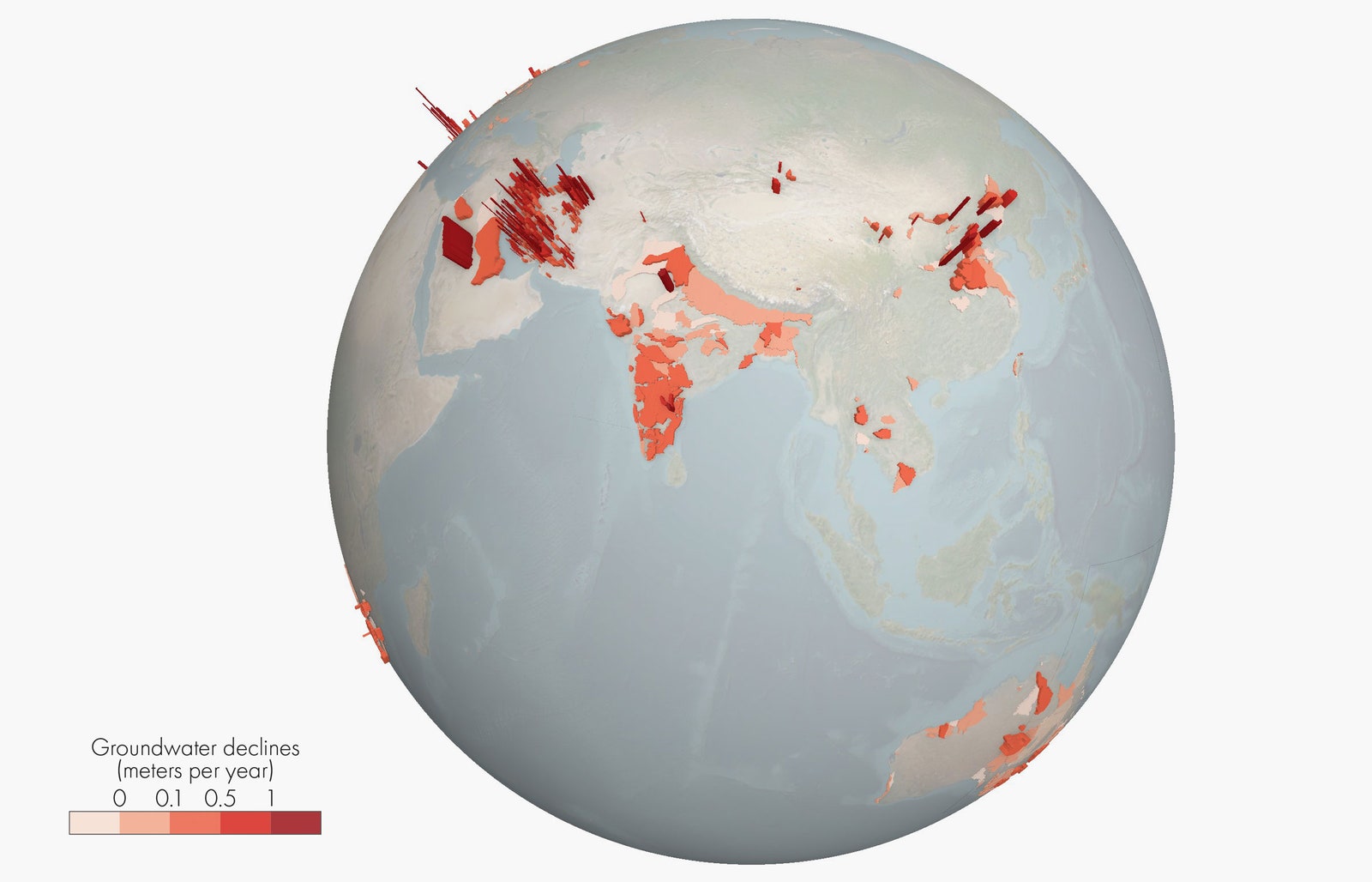The water that pours out of your tap, or that’s unnecessarily packaged in a single-use bottle, or that helped grow the produce in your fridge—all of it may well have come from aquifers somewhere. These are layers of underground material that hold water, and can be made up of porous rock or sediments like sand and gravel. When it rains, some water collects in lakes and rivers and eventually flows out to sea, but some soaks deep into the ground, accumulating in these subterranean stores.
We dig shallow wells or drill deeper boreholes to tap into aquifers to hydrate our civilization, but that extraction has gotten way out of hand. An alarming new paper published today in the journal Nature looked at available data on 1,700 aquifer systems worldwide and found that groundwater is dropping in 71 percent of them. More than two-thirds of these aquifers are declining by 0.1 meters (0.33 feet) a year, while 12 percent are notching a rate of 0.5 meters. (Think of this decline as like looking down into a well, then coming back the next year and seeing that the water level is 0.1 meters lower.) Nearly a third of the aquifers are experiencing accelerated depletion, meaning the decline is speeding up, in particular where the climate is dry and there’s a lot of agriculture that needs watering.
“Real-world observations—300 million of them in hundreds of thousands of wells around the globe—show two main findings,” says water scientist Scott Jasechko of UC Santa Barbara, co-lead author of the new paper. “One is that rapid groundwater declines are unfortunately widespread globally, especially in dry places where croplands are extensive. And then second, even worse, groundwater declines have, if anything, accelerated over the last four decades in a disproportionately large share of the global landmass.”
Aquifers are supposed to be reliable banks of water, safely locked underground where the liquid can’t easily evaporate away. They’re a rainy-day fund—or, more accurately, a dry-day fund—available to tap into in times of need, like during a drought. But from Chile to Afghanistan to India to China, and back to the United States, humans are emptying these water stores at an unsustainable pace. (In the maps below, the deep red indicates groundwater declines of a meter a year, with lighter reds showing less decline.) In areas where an already dry climate is getting drier because of climate change, people have less aboveground water to rely on, and so they’re forced to over-extract aquifers.
Illustration: Scott Jasechko/UCSB


